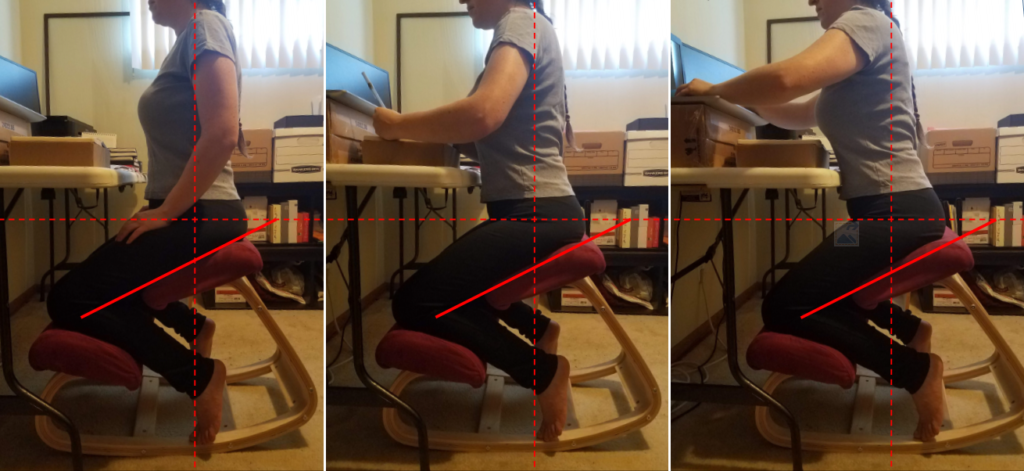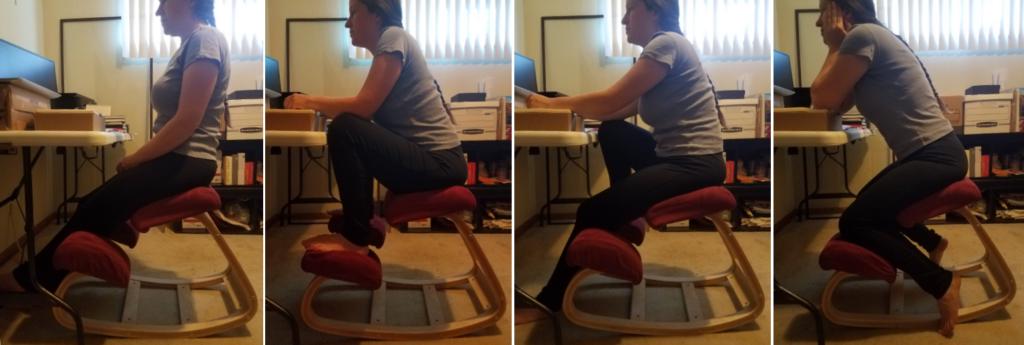I recognize that working from home is the ideal situation for some, the last thing some of us ever wanted, and a mix of pros and cons for everyone in between. Being such an extrovert my entire life, I thought if I ever had to work from home, I would go crazy in isolation. That’s why I never even considered setting up a home office.
Working Remotely
At the beginning of March 2020, I started a new job. It was in an office, at a company that never had a telework policy – everyone was expected to be at their desks Monday to Friday, 9 to 5. That was one of the many issues I intended to address as I took the reins (since I don’t think that kind of rigidity is realistic if you’re also promoting a healthy work-life balance), but I never even got the chance to bring it up. I had eight days in the office with my coworkers, watching the mounting concern and restrictions related to the coronavirus, before telling them to take their laptops home and that we’d see each other again in two weeks. [Insert laugh track here.]
I then went home and set up for remote work in our guest room, which involved me sitting on the pull-out couch with my laptop balanced on top of a suitcase in front of me. In my mind there was no reason to do anything more than that since we’d be back at work in no time.

By May I determined it was time to set up a formal work station for myself. I cleared some space, pulled out an old plastic folding table, and grabbed a rickety old office chair that had been hiding in a corner of the house. Surely I didn’t need anything more substantial than that, as we were planning a 50% return to the office in July. [Insert laugh track again.]
Once summer came and went, we all realized that working from home would be the standard for us until COVID-19 vaccines were widely available, which at that point were not expected until summer/fall 2021. I also accepted the fact that alternating between the couch and the rickety office chair was not doing my back any favors. Therefore, since I was going to be in work-from-home mode for the long haul, I needed to be taking better care of my body.
Ergonomic Considerations
I started looking at (or maybe just talking about) more substantial office chairs, particularly something with lumbar support to help my posture. Naturally, advertisements started showing up in my Facebook feed, since Big Brother is always watching. While I had never envisioned anything other than a standard office chair, what caught my eye was a recurring ad for something called a kneeling chair.
The kneeling chair did not look like anything I had ever seen: a rocker with no back and two pads to support the shins. It claimed to improve posture and reduce back pain. I was naturally skeptical (as one should be of any miracle claims presented online) but also very curious. I was careful not to click on the company’s Facebook link but rather type it into a search engine and navigate there on my own. I also pulled up information on kneeling chairs in general to see if there was any merit to them.

With my legs positioned on a downward angle toward the floor, it is much easier to keep my back upright (3rd photo). I can still slouch in the kneeling chair (4th photo), but it feels no easier or harder than sitting straight.
The need for ergonomic office chairs stems from the fact that our bodies did not evolve to be seated at a desk for eight hours a day. The more movement and variety you can incorporate into your work time, the better. One health and wellness site evaluating desk and chair options recommends that for every 30 minutes of traditional desk work, eight minutes should involve standing, and two should involve moving or stretching.[1]
The standard chairs we typically use in office settings do not encourage good posture, especially if we’re working at a computer all day. Slouching over a keyboard can of course cause neck and back pain, but it can also be responsible for other conditions, such as incontinence, constipation, and heartburn.[2] Traditional chairs can help with better posture if they have lumbar support, but, speaking from personal experience, it’s still easy enough to slouch forward, out of the chair, despite that nice lower back cushion.
Features of Note
The purported benefit of kneeling chairs is that their shape inherently encourages better posture and movement. My research showed that there are three features to look for when purchasing a kneeling chair: angle of the seat and knee pads, the correct size for your height, and the ability to rock.[3] I found one that met the suggested requirements, and it was comparably priced with good quality office chairs (which is, coincidentally, about half the price of high-end ergonomic chairs). My parents got it for me for Christmas, and I was very excited to try it out. Here’s what I found…
Angle
Traditional chairs have a seat that is parallel to the ground, making it difficult to sit up straight. Even when they have lumbar support, I need to actively hold my torso up against the back rest to achieve good posture, and I have always found it challenging to keep my back muscles engaged that way for an extended period of time. At some point I always wind up leaning forward to rest my arms on the desk, whether I realize it or not.
With the kneeling chair, the angle of the seat makes it easier to sit straight because my torso feels more balanced. One of the articles I had read says the lack of a back rest forces you to keep your core muscles engaged. While that’s true, it feels like it takes less effort to sit up straight than in a standard chair. I do still slouch, possibly about half the time (which is considerably less than I did before), but it feels just as easy to sit up straight as it does to slouch.

Size
If you’re going to shop kneeling chairs, you should look for one that lists whether it fits your height. One company listed their standard, non-adjustable size as fitting people between 5’2″ and 6’2″. Speaking as someone on the lower end of that range, I am comfortable in a chair with that size rating. There are adjustable models, but most of the adjustable ones I’ve seen don’t have the ability to rock, which I have found to be an incredibly important – possibly the most important – feature.
Movement
Since using my rocking chair, I have become much more aware of how I move during the course of the day. Whether I’m typing on my keyboard, writing in my notebook, or just sitting and having a conversation, I lean into my work at various angles. If my chair didn’t rock, I know there would be varying levels of pressure on my back based on my position. However, since the chair moves slightly along with my body, I find that I can stay more comfortable as I change activities.
There is also a lot more flexibility than I imagined in how I’m using this chair. The shin pads are not intended to support a lot of your weight – most of your weight should remain on the seat – which means that sometimes I will use one pad, or neither, or put my feet on them instead of my shins. The other nice thing about using the shin pads is that they encourage a more open hip flexor position than standard chairs do. We typically hold a lot of tension in our hips, which is why hip stretches in yoga are a great way to release stress.[4]
As for my general posture with the kneeling chair, I move through a variety of positions from slouching to upright over the course of the day, but I’ve also noticed that I don’t have as much back pain as I did before. I don’t spend the whole day in my chair, typically using it just for meetings and then moving to the couch when I’m reading or responding to emails. In any case, I think it’s a great investment and encourage anyone looking for a more ergonomic office solution to do some additional research.

Do you have or have you ever tried a kneeling chair? What did you think? I’d love to hear your thoughts below.
Thanks for reading!
[1] https://www.posturite.co.uk/blog/kneeling-chairs-actually-good
[2] https://www.health.harvard.edu/staying-healthy/3-surprising-risks-of-poor-posture
[3] https://sleekform.com/blogs/news/the-three-things-you-need-to-know-before-buying-a-kneeling-chair
[4] https://www.zenbear.co.uk/latest-news/hips-and-your-emotions-yoga
0 Comments